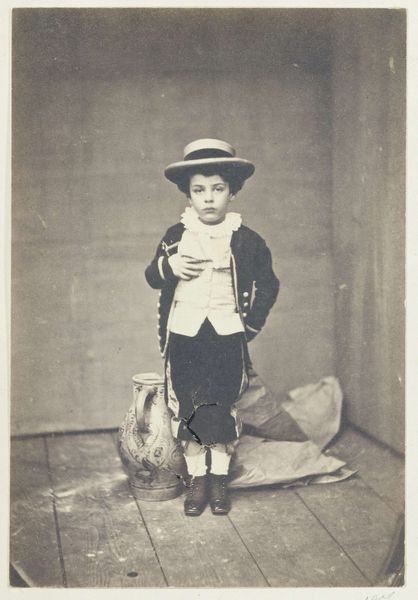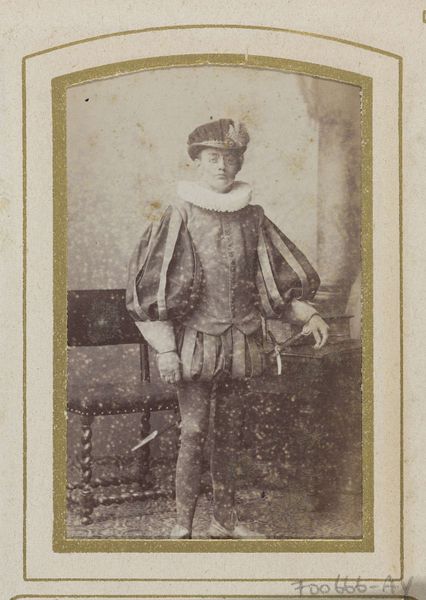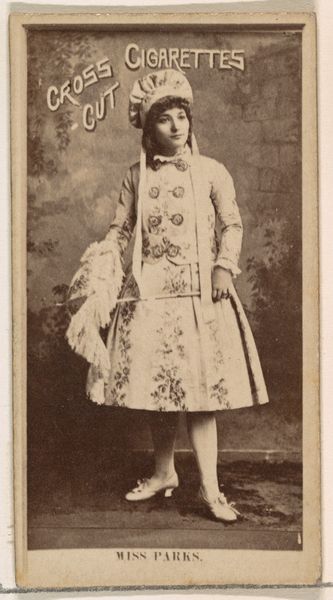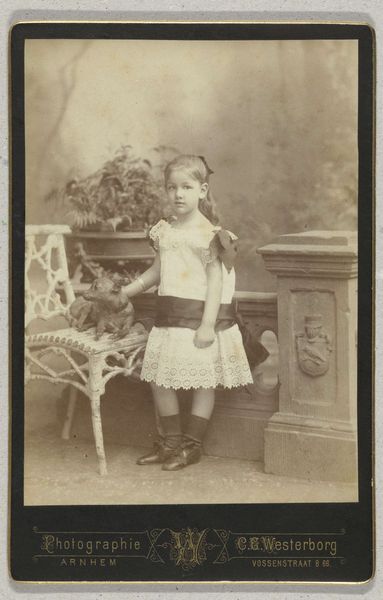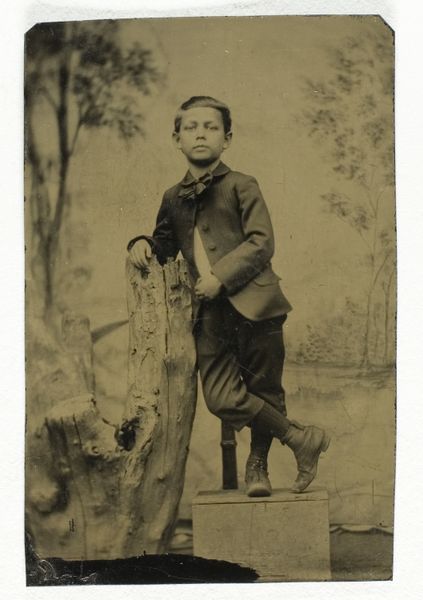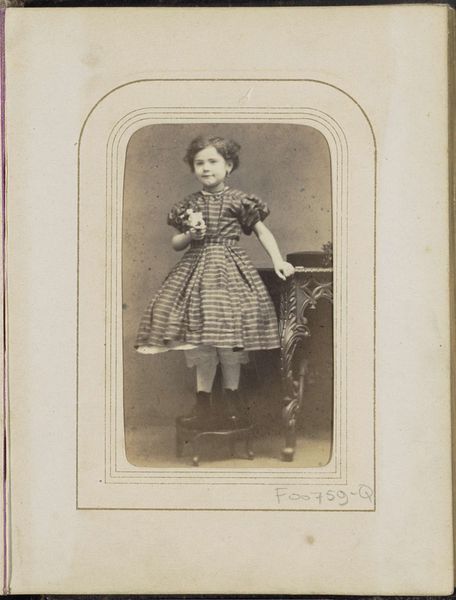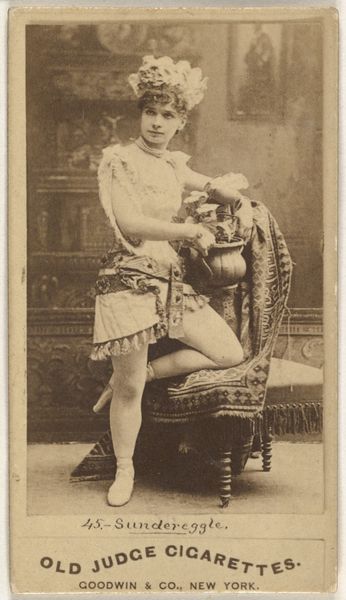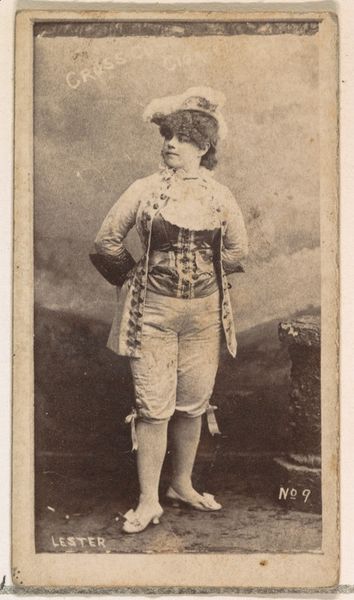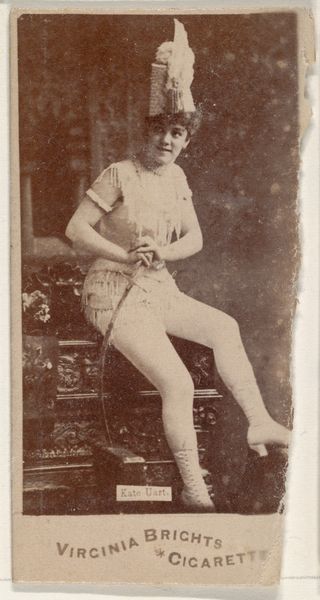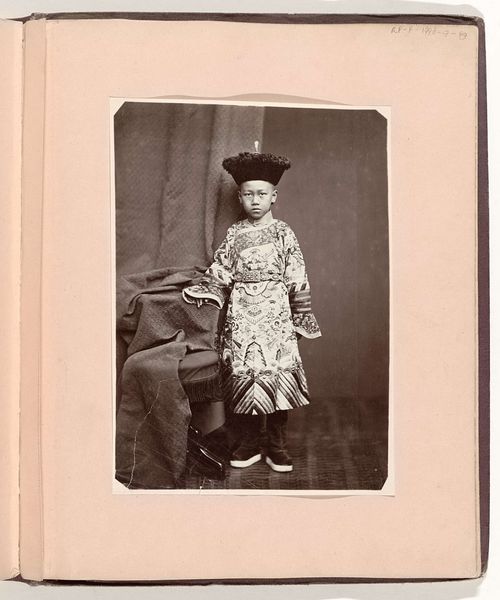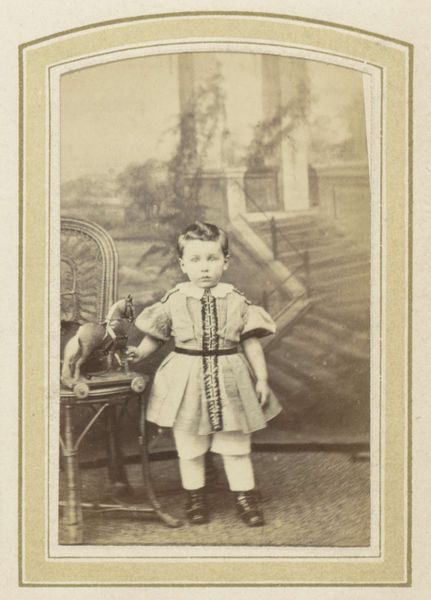
daguerreotype, photography, pencil, gelatin-silver-print
#
portrait
#
daguerreotype
#
archive photography
#
photography
#
historical photography
#
historical fashion
#
pencil
#
gelatin-silver-print
#
19th century
Dimensions: height 140 mm, width 94 mm
Copyright: Rijks Museum: Open Domain
Editor: This is Eduard Isaac Asser's "Portret van Lodewijk Asser," made around 1853. It seems to be a photograph, maybe a daguerreotype? I'm struck by how staged it feels, yet there's something unsettling in the child's gaze. What do you see in this piece, looking at it formally? Curator: Well, considering its composition, the formal arrangement is quite deliberate. Notice the stark contrast in textures. The crispness of the boy’s outfit, the flatness of the curtain backdrop, juxtaposed with the roundness of the pitcher and the table; these present a fascinating dialogue between rigid lines and softer forms. It gives an almost geometric construction of space. Editor: I see what you mean about the geometry. Does the tonal range contribute to this feeling? The darks and lights are quite separated, right? Curator: Precisely. This sharp distinction in tones reinforces that sense of geometric construction. See how the light falls predominantly on the boy's face and clothing, drawing our eye there, but is immediately contrasted with the dark vertical lines behind? Are you picking up any visual rhymes that are intriguing to you? Editor: I guess the jug and the child have rounded shape echoing, as well as the surface of the table next to his face…that seems very self-contained, and creates almost another character, along with the backdrop. Curator: Excellent observation! These mirroring create visual harmony, stabilizing the entire structure of the photograph. We have to consider how critical light is to not just showing an image, but its interplay and visual importance with form itself, especially in these early processes. It helps in making the final piece into one unified field of the lens. Editor: I’ve never really looked at early photography in that kind of detailed, visual way. Thank you, it helps to understand so much! Curator: Indeed. Analyzing artworks formally brings clarity into an image. It makes us appreciate visual relationship, how tones contribute meaning, in photography and beyond.
Comments
No comments
Be the first to comment and join the conversation on the ultimate creative platform.
